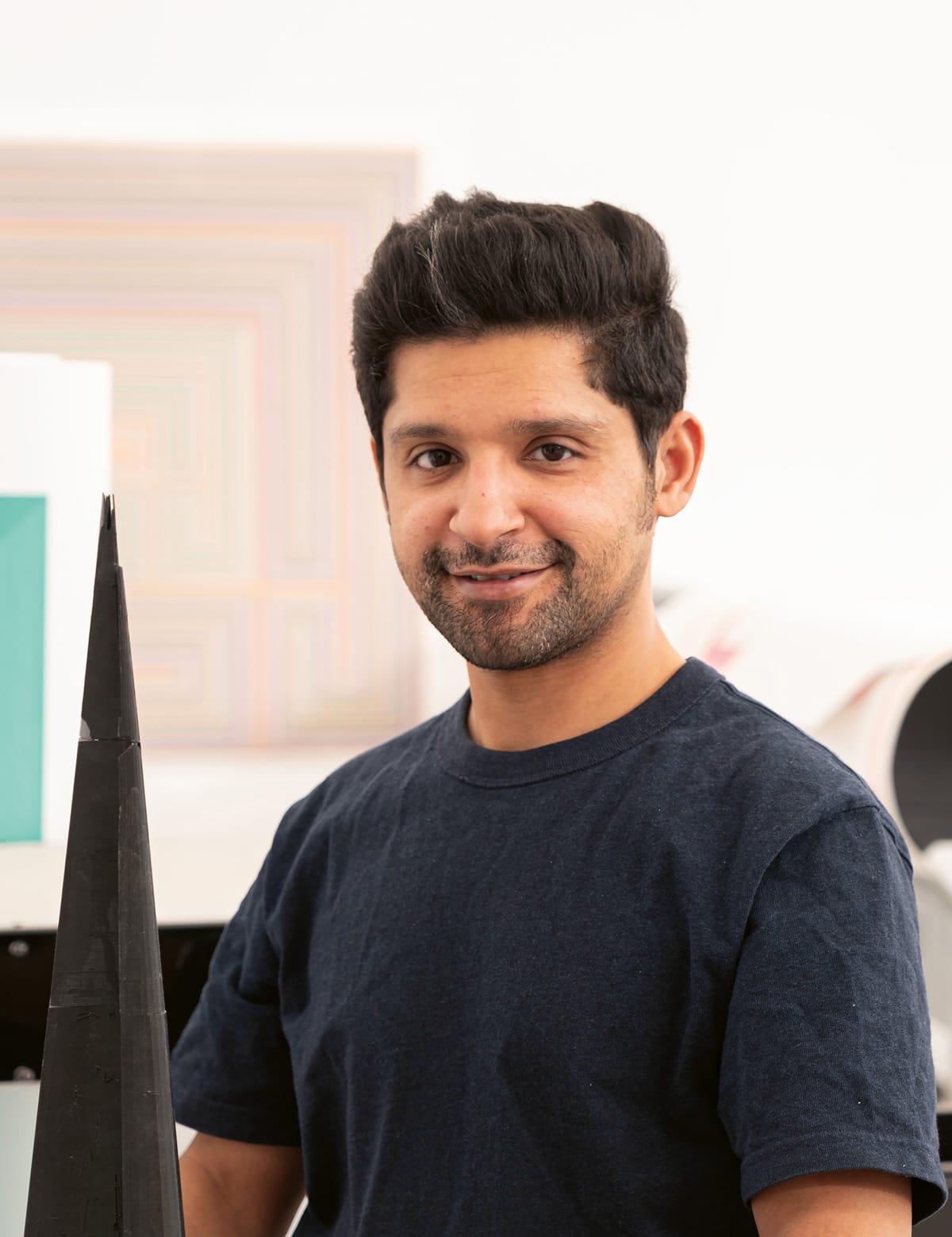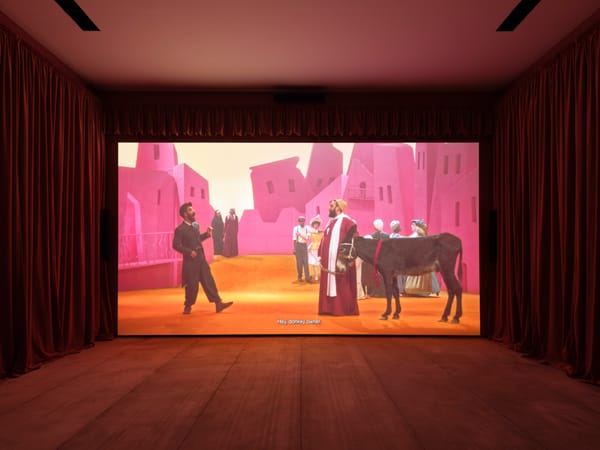Issue
Where I Work: Nasser Al Salem

After a whirlwind February trip to Jeddah, where I caught the Islamic Arts Biennale—a survey of over 2,000 years of Middle Eastern art history—I had a half-day layover in Riyadh on the way to Hong Kong. A short ride down an expansive highway brought me to ATHR Gallery in the JAX warehouse district to view Nasser Al Salem’s solo exhibition “The Edge of Language,” which had opened four days prior. Now 41, Al Salem is known for redefining the revered tradition of Arabic calligraphy by experimenting with the ancient art form. He gained international attention when his work was included in the British Museum’s “Hajj: Journey to the Heart of Islam” in 2012. The institution subsequently acquired his 2010 piece, Zamzam, an elegant calligraphic representation of a water well within the holy Masjid al-Haram in Mecca. Soon after, he was shortlisted in the third edition of the Jameel Art Prize in 2013—a prestigious award of GBP 25,000 (USD 33,750) co-presented biennially by the Victoria and Albert Museum (V&A) and Art Jameel to artists inspired by Islamic traditions in art, craft, and design. Numerous invitations to exhibitions and residencies followed, including Delfina Foundation in 2018 and KAUST – Swiss Residency at ETH Zurich in 2019.
I felt fortunate to witness Al Salem’s most current work—Arabic calligraphy abstracted and pared down in minimalist steel wire, giving visual form to gossip and chatter the artist encounters in his everyday life, whether between him and his mother or in the fleeting news headlines of the endless doomscroll on our phones. I first thought I was visiting the space alongside two other gallery-goers. A pair of young men, one with a wild mop of hair, dressed in a t-shirt and jeans, and another in more formal Saudi attire. To my surprise, it was Nasser, unassuming yet charming in demeanor, with his younger brother, Suliman, in tow. Together, they graciously led me on a tour of his show, before extending an unexpected invitation to their shared studio.







